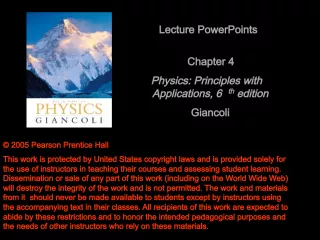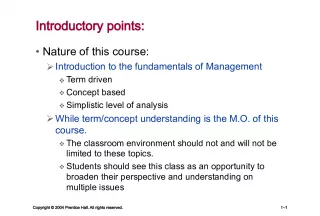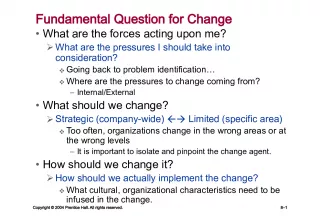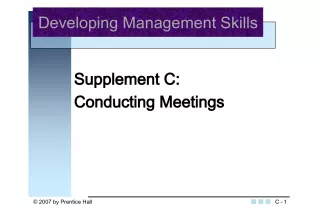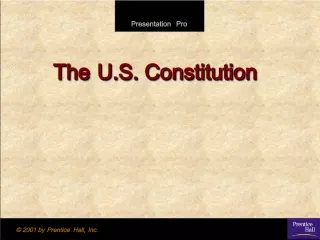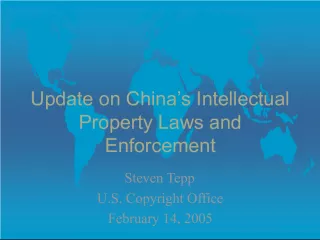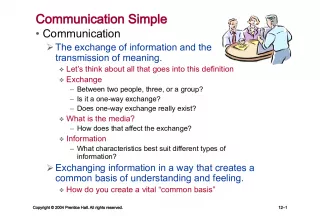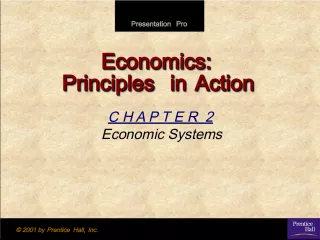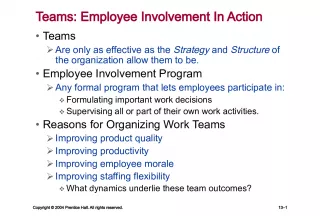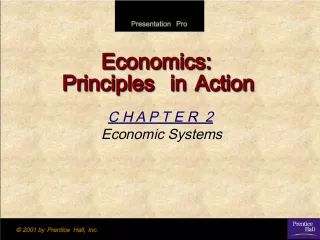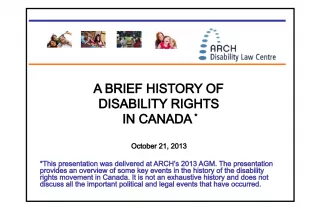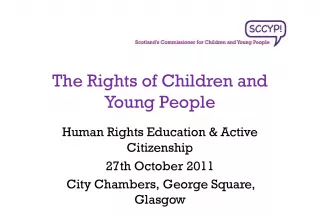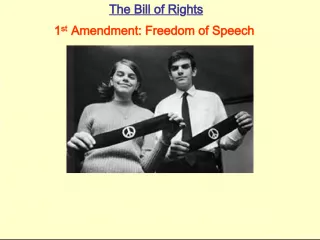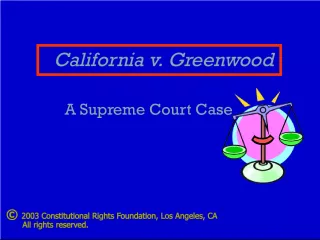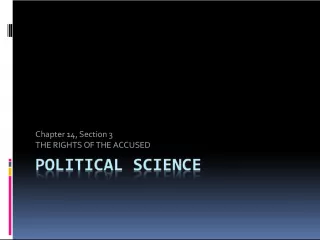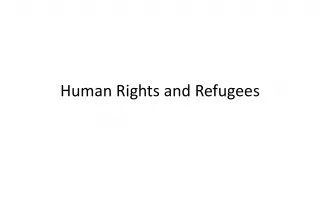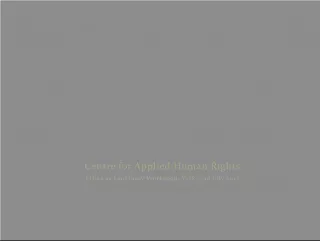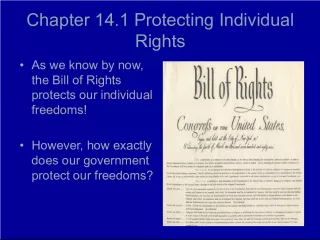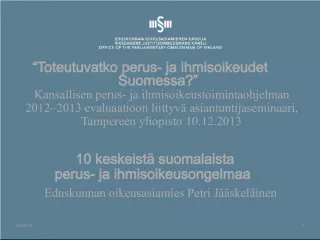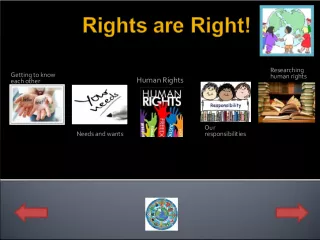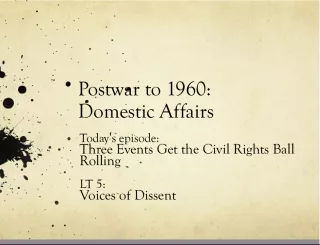copyright prentice hall all rights reser
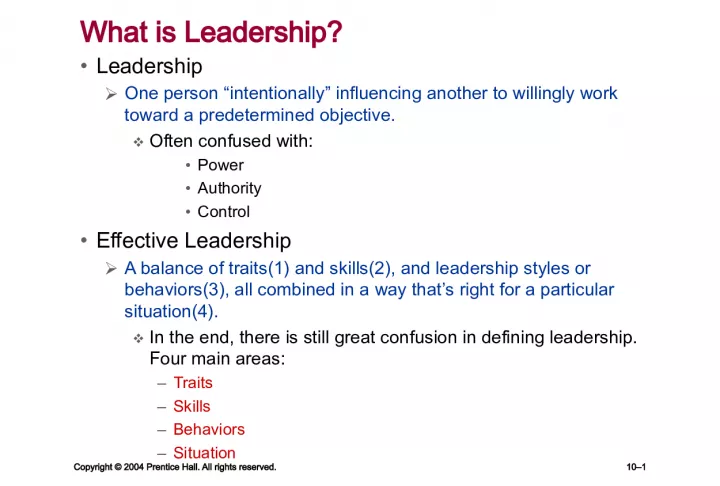

copyright prentice hall all rights reserved What is Leadership Leadership One person intentionally influencing another to willingly work toward a predetermined objective Often confused with
- Uploaded on | 0 Views
-
 marius
marius
About copyright prentice hall all rights reser
PowerPoint presentation about 'copyright prentice hall all rights reser'. This presentation describes the topic on copyright prentice hall all rights reserved What is Leadership Leadership One person intentionally influencing another to willingly work toward a predetermined objective Often confused with. The key topics included in this slideshow are . Download this presentation absolutely free.
Presentation Transcript
Slide1copyright © 2004 prentice hall. all rights reserved.10–1 What is Leadership? • Leadership One person “intentionally” influencing another to willingly work toward a predetermined objective. Often confused with: • Power • Authority • Control • Effective Leadership A balance of traits(1) and skills(2), and leadership styles or behaviors(3), all combined in a way that’s right for a particular situation(4). In the end, there is still great confusion in defining leadership. Four main areas: – Traits – Skills – Behaviors – Situation
Slide2copyright © 2004 prentice hall. all rights reserved.10–2 The Traits And Skills Of Leadership • Traits The “unchanging” characteristics of a person that predisposes someone to act in a particular way. I’m not sure I buy that, but we’ll stick with it • Personality, Motives, Values. • Some people are natural leaders • Skills The ability to do something in an effective manner. Beyond disposition • Skill sets that can be learned…(leadership) • Can leadership be trained? • Traits or skills on which leaders differ from nonleaders: “Traits” that have shown to generalize across all situations Drive, Desire to lead, Honesty and Integrity Self-confidence, Cognitive ability, Knowledge of the business.
Slide3copyright © 2004 prentice hall. all rights reserved.10–3 Power and Leadership If you argue that power is an antecedent to leadership Then these are legitimate power sources However, – Leadership influence is not limited to power • Sources of Power Position in the organization (formal authority) Reward Coerce or punish Expertise Referent power (charisma) Control over information or access to resources (gatekeeper)
Slide4copyright © 2004 prentice hall. all rights reserved.10–4 Leader Behaviors • The Ohio State Dimensions of Leadership: Research showed that almost all aspects considered to be good leadership fell into two(2) main categories… Consideration – Mutual trust – Friendship – Support – Respect – Warmth. Initiating structure – Organizes the work to be done – Defines relationships or roles – The channels of communication – How to get the job done.
Slide5copyright © 2004 prentice hall. all rights reserved.10–5 Leader Behaviors: Michigan • Leadership Styles (Orientation) Employee-oriented Leader A leader who focuses on the needs of employees and emphasizes building good interpersonal relationships. – Posited to lead to higher performance and effectiveness – This is true If, and only if, the job-centered aspects are taken care of… Job-centered Leader A leader who focuses on production and on a job’s technical aspects. – In my opinion, while employee-oriented leadership leads to higher performance. – Job-centered leadership is necessary in some form to create overall effective leadership.
Slide6copyright © 2004 prentice hall. all rights reserved.10–6 Participative and Autocratic Styles Participative Leader Actually part of the Michigan Study A leader who shares the problem with subordinates as a group So that together, they can generate and evaluate alternatives in order to reach consensus on a solution. – Seen as a more effective approach to leadership • Group supervision, Support, Decision-making • Autocratic Leader A leader who solves problems and makes the decisions alone Using the information available at the time – Not necessarily a bad approach to leadership – Highly dependent on the situation
Slide7copyright © 2004 prentice hall. all rights reserved.10–7 Transactional / Transformational Leadership Behaviors • Transactional Leadership Behaviors Based on the individual’s self interest Leadership actions that focus on accomplishing the tasks at hand Maintaining good working relationships Working with rewards for performance. • Transformational Leadership Behaviors Based on raising consciousness and mobilizing energy Influencing major changes in the attitudes and assumptions of organization members Building commitment for the organization’s mission, objectives, and strategies.
Slide8copyright © 2004 prentice hall. all rights reserved.10–8 Transactional / Transformational Leadership Behaviors Transformational Behaviors Idealized Influence Individualized Consideration Inspirational Motivation Intellectual Stimulation • Transactional Behaviors Contingent Reward Active Management by Exception Passive Management by Exception • Follower outcomes Bringing awareness to the importance of the task Inducing transcendence to the organization or team Activating their higher-order needs
Slide9copyright © 2004 prentice hall. all rights reserved.10–9 Situational Theories Of Leadership • Fiedler’s Contingency Theory of Leadership This theory introduces the effect that the situation may have on leadership style and effectiveness. Least Preferred Co-worker (LPC) Scale Leaders who describe their least preferred coworker favorably (pleasant, smart, and so on) – Are “High LPC” and are considered more people-oriented. Leaders who describe least preferred coworkers unfavorably – Are “Low LPC” and are less people-oriented and more task-oriented. The truth is that the situation sometimes has the strongest effect on what leadership style should be used…
Slide10copyright © 2004 prentice hall. all rights reserved.10–10 FIGURE10–3 Fiedler’s LPC Leadership Scale Source: Fred E. Fiedler, A Theory of Leadership Effectiveness (New York: McGraw-Hill, 1967), p. 41.
Slide11copyright © 2004 prentice hall. all rights reserved.10–11 Situational Theories Of Leadership • The effectiveness of High-LPC / Low-LPC leadership style depends upon three(3) situational variables: Position power – The degree to which the position itself enables the leader to get group members to comply with and accept his or her decisions and leadership Task structure – How routine and predictable the work group’s task is. – The extent to which SOP’s are in place Leader-member relations – The extent to which the leader gets along with workers and the extent to which they have confidence in and are loyal to him or her.
Slide12copyright © 2004 prentice hall. all rights reserved.10–12 FIGURE 10–4 How the Style of Effective Leadership Varies with the Situation Source: Adapted and reprinted by permission of the Harvard Business Review . “How the Style of Effective Leadership Varies with the Situation” from “Engineer the Job to Fit the Manager” by Fred E. Fiedler, September– October 1965. Copyright © 1965 by the President and Fellows of Harvard College; all rights reserved.
Slide13copyright © 2004 prentice hall. all rights reserved.10–13 Situational Theories Of Leadership • Path–Goal Leadership Theory (House) Assumes that the leader’s job is to ensure that followers are motivated to do their jobs Based on the expectancy theory of motivation . Expectancy E x (VI) – Does the follower perceive the instrumentality and expectancy in his/her task. The leader’s job To increase the personal rewards subordinates receive for attaining goals – Adding Valence To make the path to these goals easier to follow by reducing roadblocks—setting goals – Adding Instrumentality Explaining what needs to be done, and organizing the work. – Adding Valence
Slide14copyright © 2004 prentice hall. all rights reserved.10–14
Slide15copyright © 2004 prentice hall. all rights reserved.10–15 Situational Theories Of Leadership • Substitutes for Leadership Theory This is an important part of leadership today Various characteristics of – Subordinates – Task – Organization That either substitute for (render unnecessary) direct intervention by the leader Neutralize (prevent) the leader’s best efforts. Implications for leaders: Choose the right followers Organize the task properly Create the right environment In the end, a leader can create effective substitutes for leadership that help facilitate performance
Slide16copyright © 2004 prentice hall. all rights reserved.10–16
Slide17copyright © 2004 prentice hall. all rights reserved.10–17 Situational Theories Of Leadership • Leader–Member Exchange (LMX) Theory The theory that leaders may use different leadership styles with different members of the same workgroup Based in part on perceived similarities and differences with the leader. So, this perception of leadership is based on the attribution of both – The leader and the follower Leaders (and sometimes followers) tend to divide subordinates into an: In-group Out-group Members of the in-group tend to perform better than do those in the out-group. Why?
Slide18copyright © 2004 prentice hall. all rights reserved.10–18 Situational Theories Of Leadership • The Vroom–Jago–Yetton Model A situational model based on a continuum of five decision styles with differing degrees of employee participation. – Autocratic Decisions (AI and AII) – Consultation Decisions (CI and CII) – Joint Decision Making (GII) Enabling leaders to analyze a situation and decide how much participation is called for using: A set of management decision styles A set of diagnostic questions A decision tree for identifying how much participation the situation calls for.
Slide19copyright © 2004 prentice hall. all rights reserved.10–19 Vroom–Jago–Yetton Model’s Diagnostic Questions A. Is there a quality requirement such that one solution is likely to be more rational than another? B. Is there sufficient information to make a high-quality decision? C. Is the problem structured? D. Is acceptance of the decision by subordinates critical to effective implementation? E. If you alone make the decision, is it reasonably certain that it would be accepted by your subordinates? F. Do subordinates share the organizational goals to be obtained in solving this problem? G. Is conflict among subordinates likely over preferred solutions?
Slide20copyright © 2004 prentice hall. all rights reserved.10–20 FIGURE 10–5 Types of Management Decision Styles
Slide21copyright © 2004 prentice hall. all rights reserved.10–21 FIGURE 10–6 Vroom and Yetton Decision Process Flow Chart (Decision Tree) Source: Adapted from Leadership and Decisionmaking by Victor H. Vroom and Philip W. Yetton, by permission of the University of Pittsburgh Press. Copyright © 1973 by University of Pittsburgh Press.
Slide22copyright © 2004 prentice hall. all rights reserved.10–22 Situational Theories Of Leadership • Hersey–Blanchard Situational Leadership Model A model aimed at providing a practical way for a leader to decide how to adapt his or her style to the task. Based on three situational variables – Support Required – Guidance Required – Follower Readiness Model focuses on four leadership styles: The delegating style lets the members of the group decide what to do. The participating style asks the members of the group what to do, but makes the final decisions. The selling style makes the decision but explains the reasons. The telling style makes the decision and tells the group what to do.
Slide23copyright © 2004 prentice hall. all rights reserved.10–23 FIGURE 10–7 Summary of the Situational Leadership Model Source: Jerald Greenberg, Managing Behaviour in Organizations: Science in Service (Upper Saddle River, NJ: Prentice-Hall, 1996). Reprinted by permission.
Slide24copyright © 2004 prentice hall. all rights reserved.10–24 FIGURE 10–8 Applying the Situational Leadership Model Source: Adapted from Paul Hersey, Situational Selling (Escondido, CA: Center for Leadership Studies, 1985), p. 19. Reprinted with permission.
